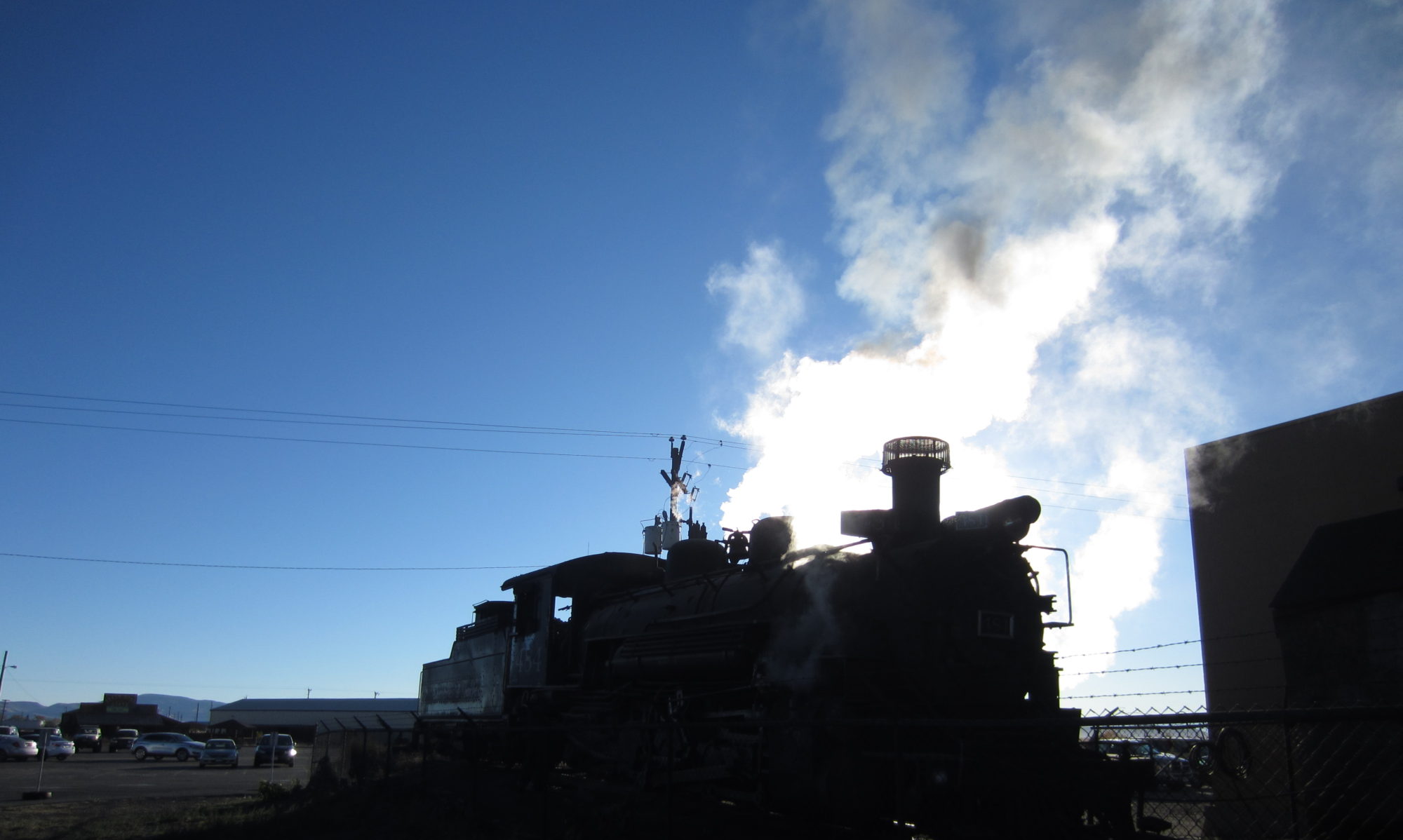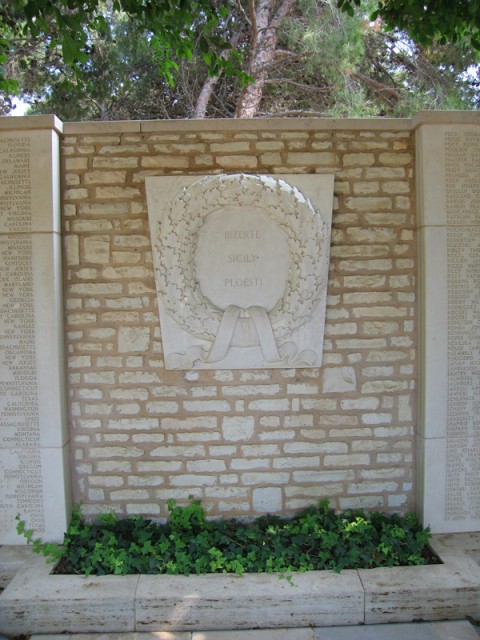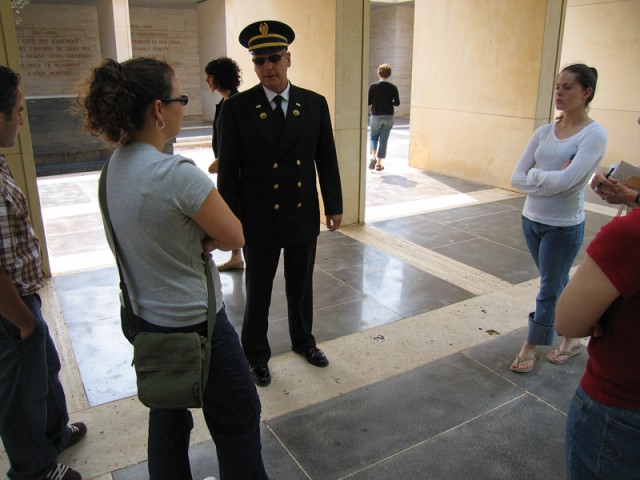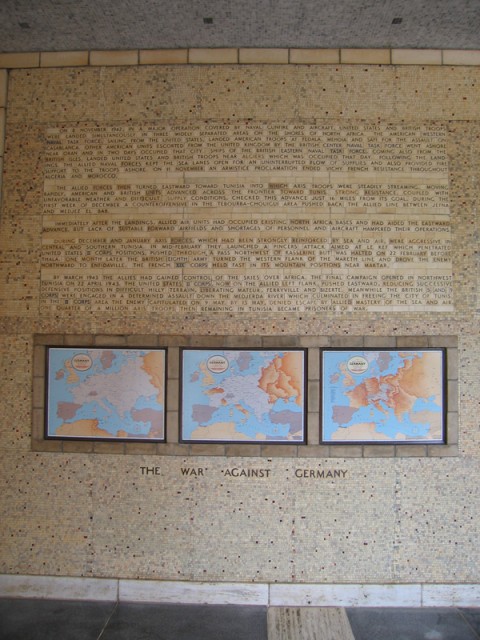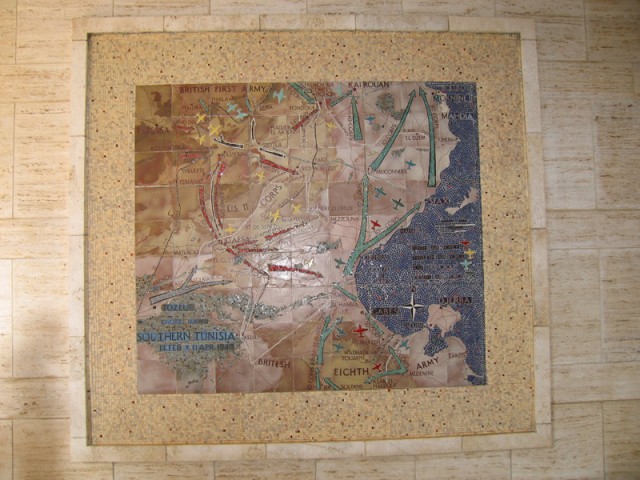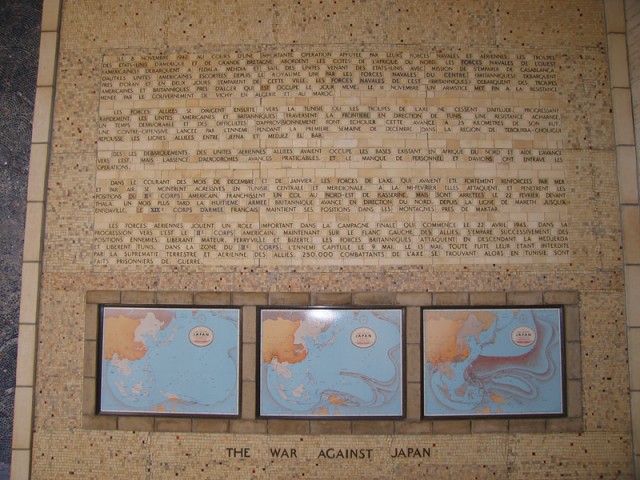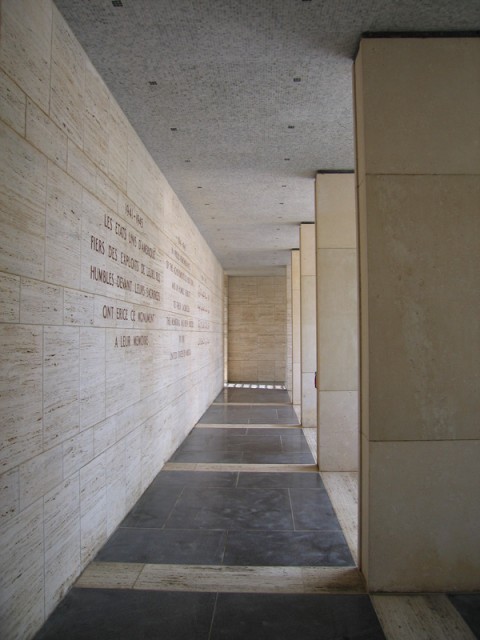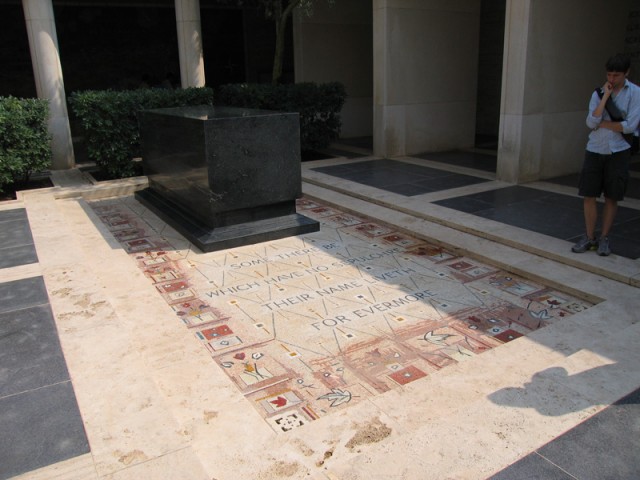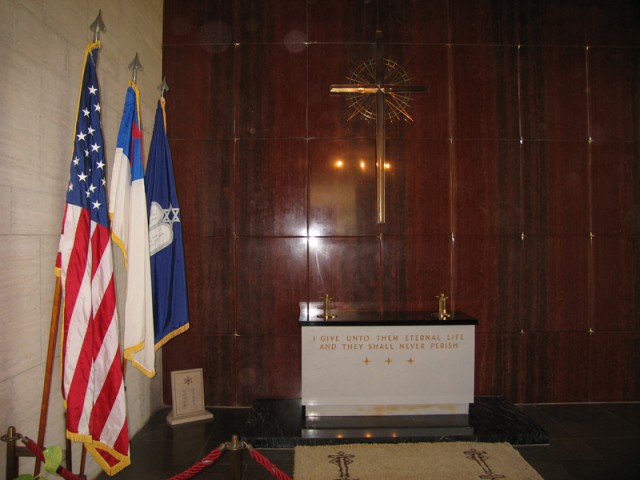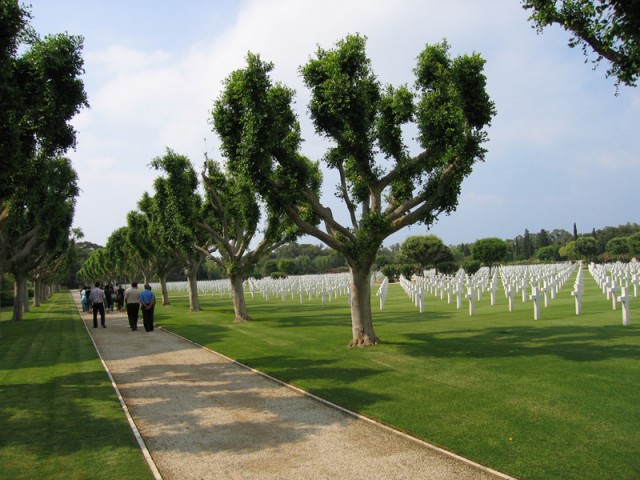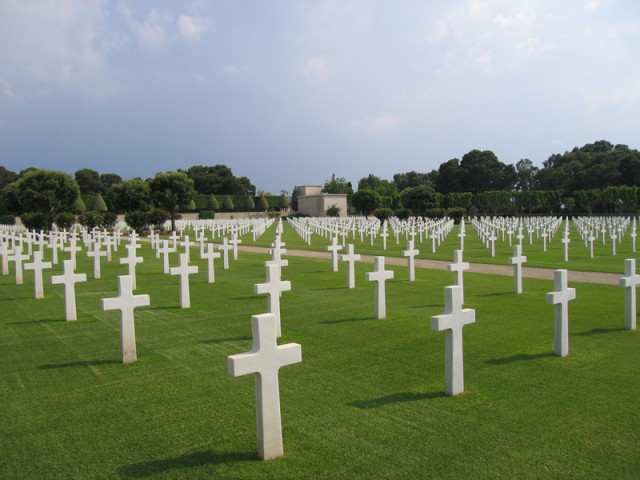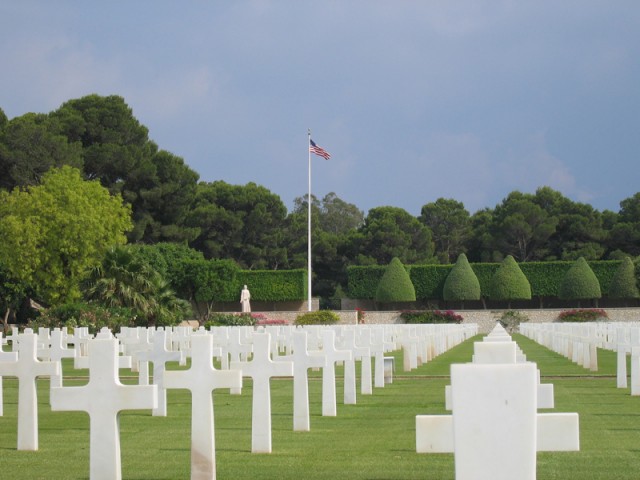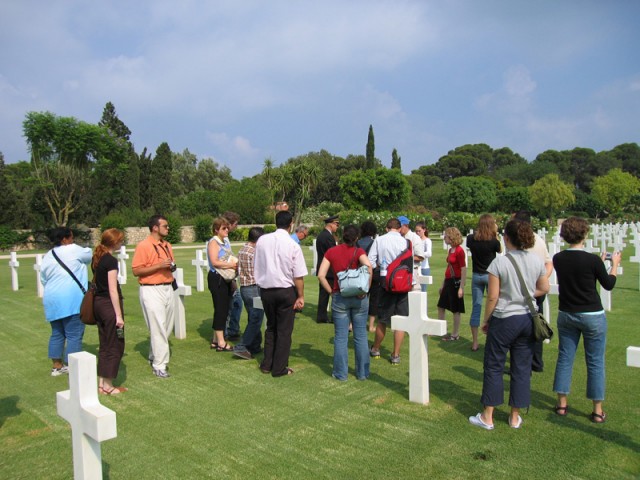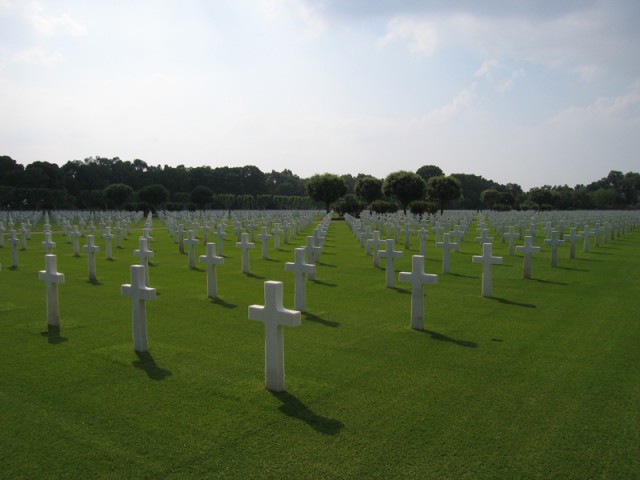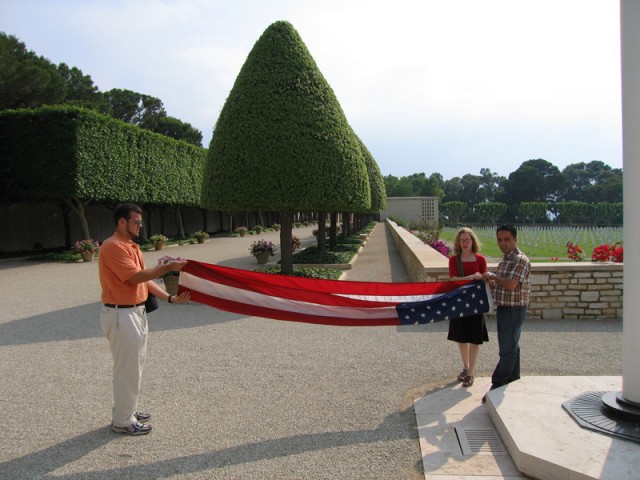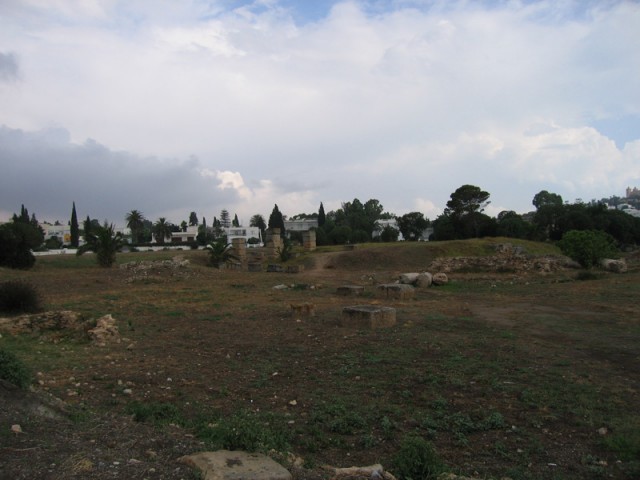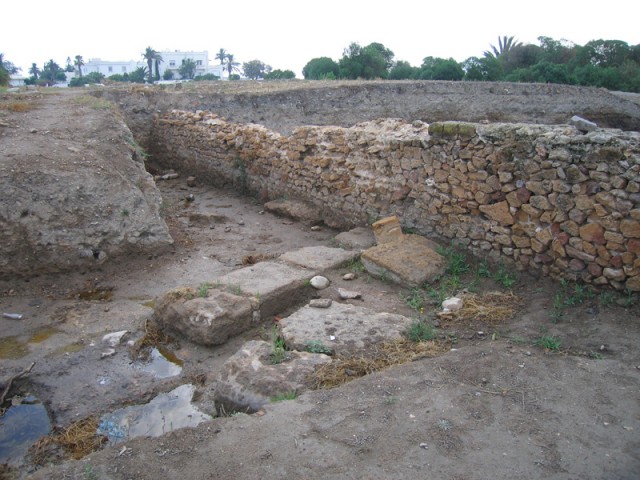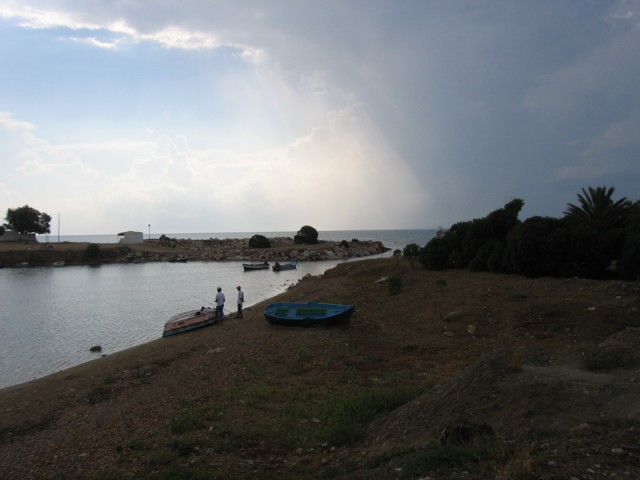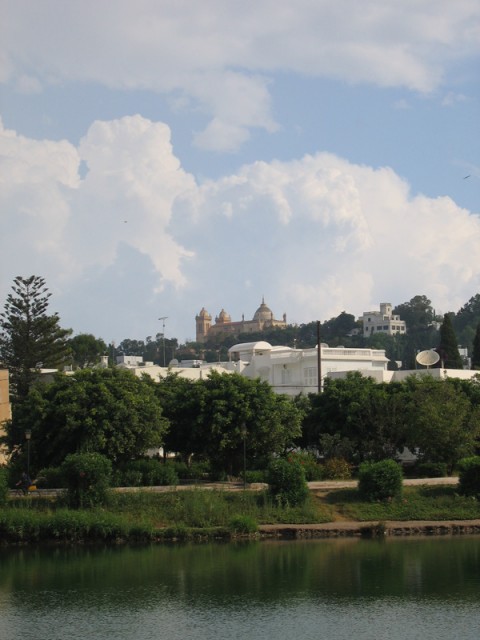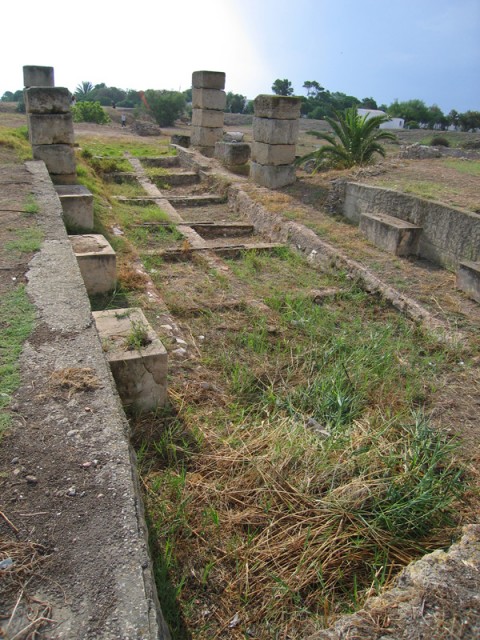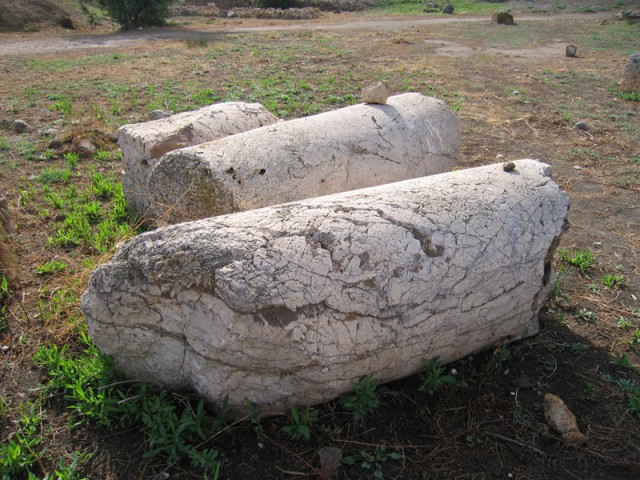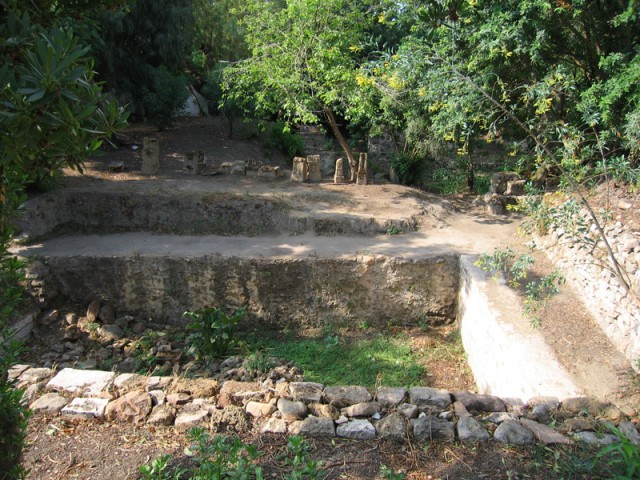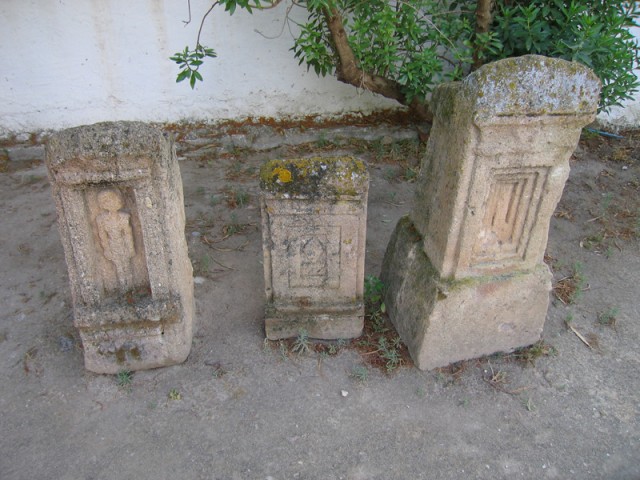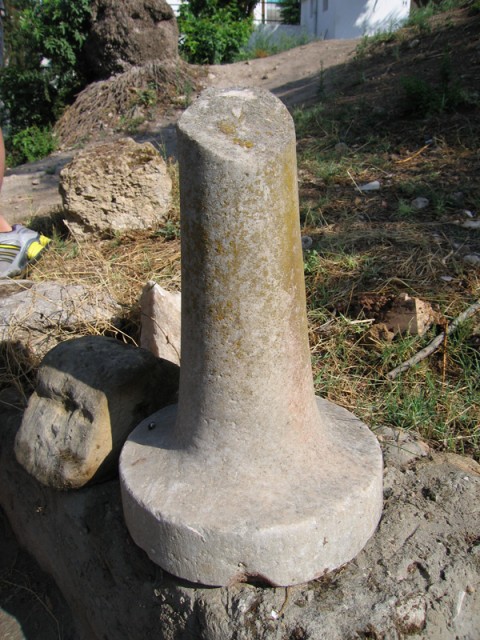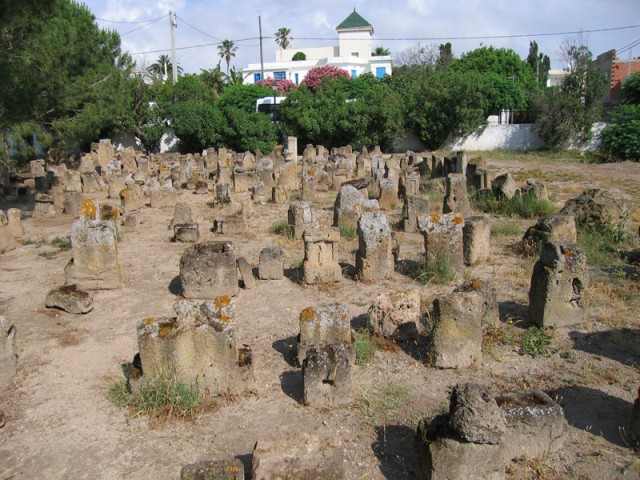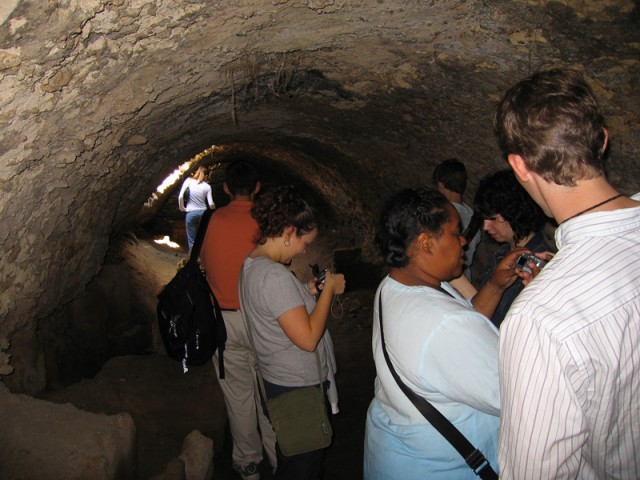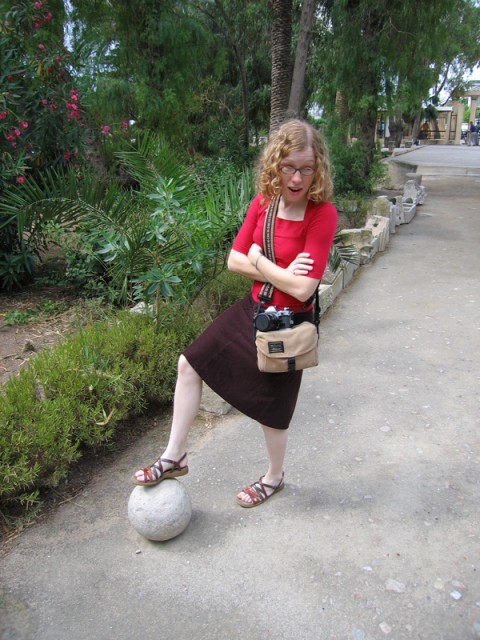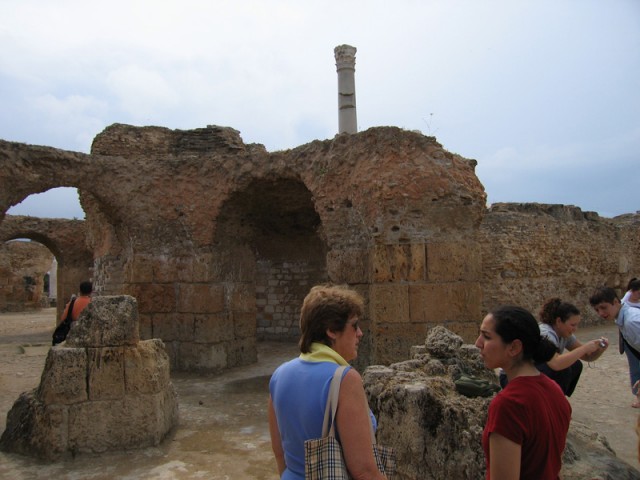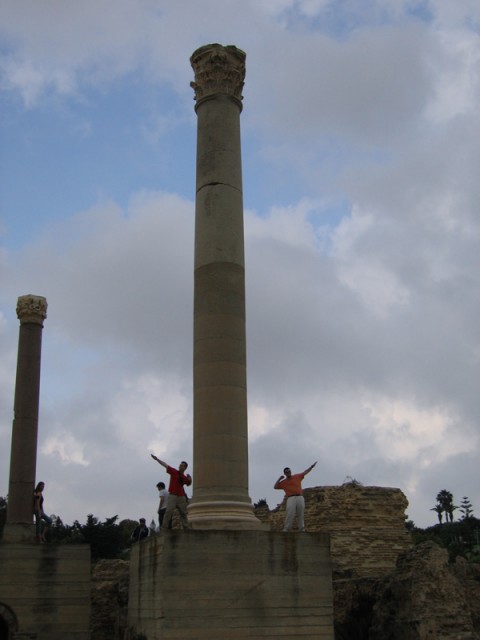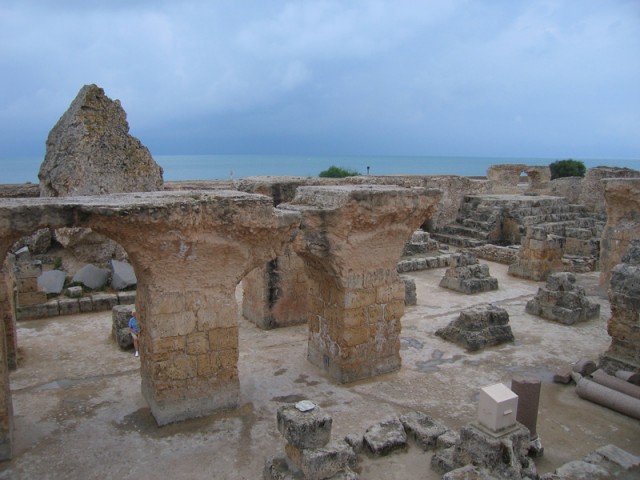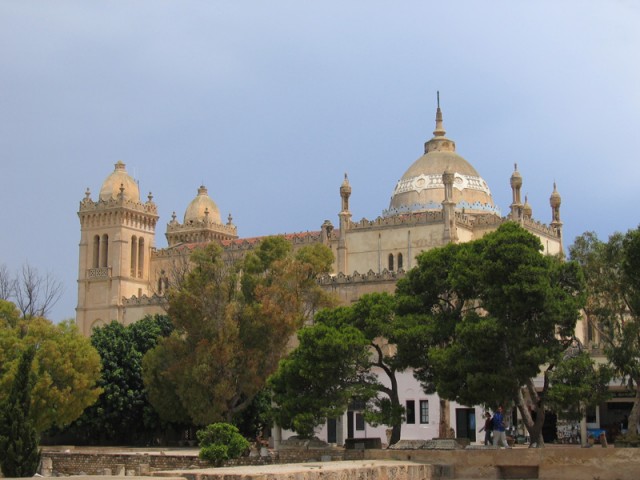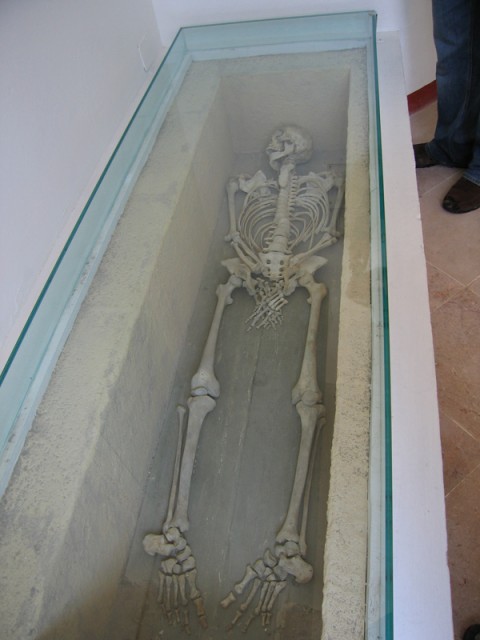Having previously been to many major archeological sites across North Africa, I was under-whelmed by Carthage and the Anonin baths. Due to the repeated destruction of the city, very little remains of the original. The baths were the best preserved, but even they were only foundations of what was once a truly massive complex. Luckily, the museum at Carthage provided adequate maps and drawings recreating what was once a mighty city.
It was interesting seeing many of the same artifacts in the museum and on the ground as I have seen at Roman and earlier sites in Egypt and Morocco. Of particular interest were the oil lamps. In Egypt at an unexcavated ruin at the shore of what once was a huge inland lake where now the Faiume Desert sprawls, I uncovered identical pottery oil lamps of the “Aladdin” style. One of the expatriates working for an oil company in Egypt that accompanied me on the visit to this dead city in Egypt collected several of the oil lamps I found and is using them again in his home, at least 1500 years since they originally burned!
Another interesting note was the absence of the open design oil lamps – which take several wicks at once – at the sites I’ve visited in Egypt and Morocco. Of course, as any good archeologist knows, the absence of an artifact doesn’t mean that they didn’t use them; however, I hadn’t seen this particular design before. Maybe this was an original Phonetician design as opposed to the Roman “Aladdin” design? I’m afraid I don’t have access to my Archeological reference library in Tunisia, but when I return home, I’ll dive deeper into the subject.
I’m curious where the necropolis for the city lays. In previous sites that I’ve visited, the cemetery has always been on a hill opposite the town, generally to the west, in the direction of the setting sun. The skeleton in the museum reminded me of the Necropolis in Egypt at the old lake-shore site. The old lake created an island out of a large hill where the town buried its dead. The hill was riddled with catacombs and crypts. Eroding out of the ground were a good ten or twenty skeletons that hadn’t been buried very deeply. Again, none of the catacombs had been explored by archeologists. We didn’t go in as there was recent evidence of collapse.
The materials used in construction of the baths piqued my interest. At sites in Morocco, Egypt, and in Europe, I’ve seen similar construction techniques where a rock foundation is laid with mud-rubble on top of that to form walls. Houses even today in the high Atlas Mountains of Morocco are still constructed using the same techniques. The rough walls are smoothed over with plaster and generally painted white. Most likely, that’s what the Anonin baths were like in their heyday. It’s really neat to look at a wall and see history dating back even further than the wall itself. As I recall, that’s how the Rosetta stone was found in Egypt. Hopefully I’m right on the Egypt part. If I remember correctly, an archeologist was walking by a wall that a farmer was tearing down and observed the tablet being unearthed.
The drainage system for the Anonin baths was impressive. At the lowest reaches of the building, a series of sewers were laid into the foundation to promote good drainage to the ocean. I wonder what the sea levels were like at the time of the high point of the baths. It’s possible that they were designed in such a way that the tide would come in under the baths every day to wash out all of the filth and detritus dropped through the latrines above. Now that’s good plumbing design!
The scale of the excavated sites at Carthage was not all that great compared to some places I’ve been before, but the amount of history that has taken place there is amazing. Many a book refers to Carthage and the Phoenicians. Later, with the Roman presence, a whole different chapter of history was written from the top of the hill. The port at Carthage for many hundreds of years shaped the Mediterranean basin. Standing in such history gives me a moment to pause and think of those that came before us, what they left behind, and what our civilization is leaving behind as a memorial to our passing into the dark and dusty annals of history.

